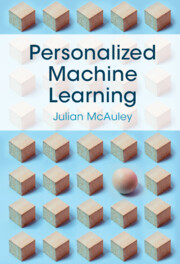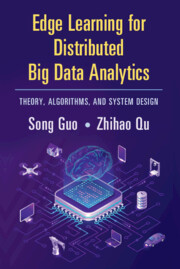Refine search
Actions for selected content:
1835 results in Knowledge Management, Databases and Data Mining
Contents
-
- Book:
- Personalized Machine Learning
- Published online:
- 20 January 2022
- Print publication:
- 03 February 2022, pp v-viii
-
- Chapter
- Export citation
6 - Content and Structure in Recommender Systems
- from Part Two - Fundamentals of Personalized Machine Learning
-
- Book:
- Personalized Machine Learning
- Published online:
- 20 January 2022
- Print publication:
- 03 February 2022, pp 144-176
-
- Chapter
- Export citation
1 - Introduction
-
- Book:
- Personalized Machine Learning
- Published online:
- 20 January 2022
- Print publication:
- 03 February 2022, pp 1-16
-
- Chapter
- Export citation
Preface
-
- Book:
- Personalized Machine Learning
- Published online:
- 20 January 2022
- Print publication:
- 03 February 2022, pp ix-x
-
- Chapter
- Export citation
7 - Temporal and Sequential Models
- from Part Two - Fundamentals of Personalized Machine Learning
-
- Book:
- Personalized Machine Learning
- Published online:
- 20 January 2022
- Print publication:
- 03 February 2022, pp 177-216
-
- Chapter
- Export citation
10 - The Consequences of Personalized Machine Learning
- from Part Three - Emerging Directions in Personalized Machine Learning
-
- Book:
- Personalized Machine Learning
- Published online:
- 20 January 2022
- Print publication:
- 03 February 2022, pp 273-305
-
- Chapter
- Export citation
Part Three - Emerging Directions in Personalized Machine Learning
-
- Book:
- Personalized Machine Learning
- Published online:
- 20 January 2022
- Print publication:
- 03 February 2022, pp 217-218
-
- Chapter
- Export citation
Part Two - Fundamentals of Personalized Machine Learning
-
- Book:
- Personalized Machine Learning
- Published online:
- 20 January 2022
- Print publication:
- 03 February 2022, pp 79-80
-
- Chapter
- Export citation
2 - Regression and Feature Engineering
- from Part One - Machine Learning Primer
-
- Book:
- Personalized Machine Learning
- Published online:
- 20 January 2022
- Print publication:
- 03 February 2022, pp 19-48
-
- Chapter
- Export citation
5 - Model-Based Approaches to Recommendation
- from Part Two - Fundamentals of Personalized Machine Learning
-
- Book:
- Personalized Machine Learning
- Published online:
- 20 January 2022
- Print publication:
- 03 February 2022, pp 104-143
-
- Chapter
- Export citation
8 - Personalized Models of Text
- from Part Three - Emerging Directions in Personalized Machine Learning
-
- Book:
- Personalized Machine Learning
- Published online:
- 20 January 2022
- Print publication:
- 03 February 2022, pp 219-251
-
- Chapter
- Export citation
Frontmatter
-
- Book:
- Personalized Machine Learning
- Published online:
- 20 January 2022
- Print publication:
- 03 February 2022, pp i-iv
-
- Chapter
- Export citation
4 - Introduction to Recommender Systems
- from Part Two - Fundamentals of Personalized Machine Learning
-
- Book:
- Personalized Machine Learning
- Published online:
- 20 January 2022
- Print publication:
- 03 February 2022, pp 81-103
-
- Chapter
- Export citation
9 - Personalized Models of Visual Data
- from Part Three - Emerging Directions in Personalized Machine Learning
-
- Book:
- Personalized Machine Learning
- Published online:
- 20 January 2022
- Print publication:
- 03 February 2022, pp 252-272
-
- Chapter
- Export citation

Handbook of Artificial Intelligence and Robotic Process Automation
- Policy and Government Applications
-
- Published by:
- Anthem Press
- Published online:
- 20 January 2022
- Print publication:
- 27 November 2020

Personalized Machine Learning
-
- Published online:
- 20 January 2022
- Print publication:
- 03 February 2022

Edge Learning for Distributed Big Data Analytics
- Theory, Algorithms, and System Design
-
- Published online:
- 14 January 2022
- Print publication:
- 10 February 2022
Preface
-
- Book:
- Topological Data Analysis with Applications
- Published online:
- 25 November 2021
- Print publication:
- 16 December 2021, pp vii-xii
-
- Chapter
- Export citation
References
-
- Book:
- Topological Data Analysis with Applications
- Published online:
- 25 November 2021
- Print publication:
- 16 December 2021, pp 207-215
-
- Chapter
- Export citation
Frontmatter
-
- Book:
- Topological Data Analysis with Applications
- Published online:
- 25 November 2021
- Print publication:
- 16 December 2021, pp i-iv
-
- Chapter
- Export citation
